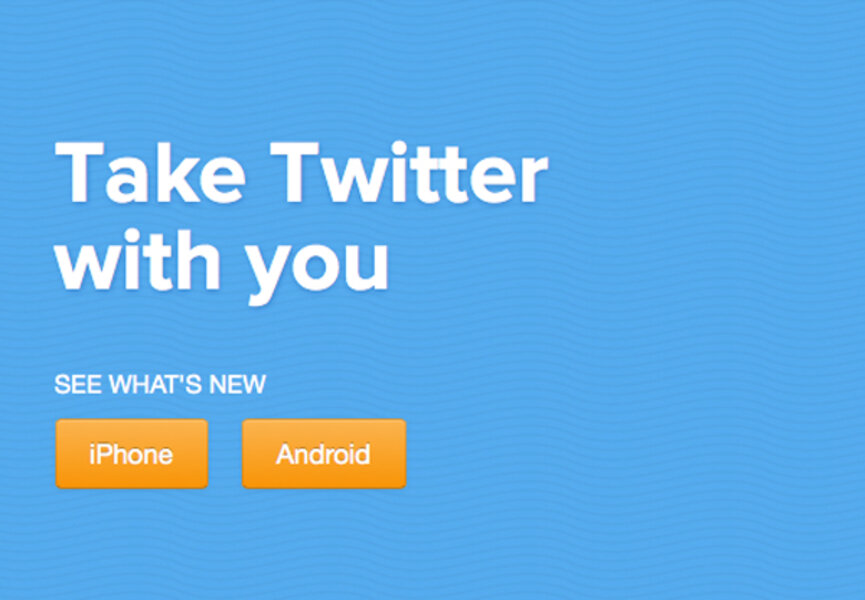Twitter fiction festival: an innovative showcase for storytelling
Loading...
Think fiction can only be found between the covers of a book – or in the quiet glow of an e-reader?
Think again. With its second Twitter fiction festival, the social networking platform is expanding traditional notions of what it means to read – and write – fiction.
The Twitter fiction festival, which runs from March 12 to 16, invites Twitter users and authors across the country to tell stories in 140-character bursts using the hashtag #TwitterFiction. This year, Twitter is teaming up with the Association of American Publishers and Penguin Random House to promote the event and choose featured storytellers.
The goal, according to festival organizers, is to give “authors of all kinds a chance to bring fiction to life with Twitter, and gives readers a chance to experience fiction in a brand new way.”
Here’s how it works. Authors and everyday Twitter users alike can submit pitches for Twitter stories by February 5 for a chance to become an “featured storyteller” whose Twitter fiction will be showcased alongside a group of well-known authors including Alexander McCall Smith, Maisey Yates, Gabrielle Zevin, Bill Roorbach, and Anthony Marra. During the festival, everyone is invited to share his or her Twitter stories with the Twitterverse using the hashtag #TwitterFiction.
The first Twitter fiction festival, held in 2012, included 29 “showcased projects” and more than 25,000 tweets published with the hashtag #twitterfiction, including some very innovative entries.
British author Lucy Coates told 100 Greek myths in 100 tweets including this gem: Sly stableboy slays king in waxed waggon wheel fiasco. Olympic Games will be 'Dad's undying legacy' vows brave Hippodamia #twitterfiction
Author Elliot Holt wrote a mystery from the perspective of several guests at a rooftop party that started with one guest plunging to her death. The story concluded, “Was Ms. Brown’s death a #homicide, a #suicide, or an #accident? You decide. Read the evidence. Then tweet your verdict…using the appropriate hashtag…”
Pulitzer Prize-winning novelist Jennifer Egan told “Black Box,” a science fiction story for The New Yorker that ran both on Twitter, one tweet at a time, and in print.
Writers can use the medium to crowdsource plots, tweet pictures and videos to build narrative, use multiple handles to weave tales, and invite feedback from twitter followers.
For a platform more commonly used to chat, gossip, eavesdrop, and share news, we’re excited to see Twitter used to create and share fiction.
“We have been tracking lots of interesting experiments with creative storytelling on Twitter,” Andrew Fitzgerald, Media R&D at Twitter, told the LA Times during the launch of the Twitter fiction festival. “From our perspective, our hope is that this inspires more experimentation.”
Husna Haq is a Monitor correspondent.







